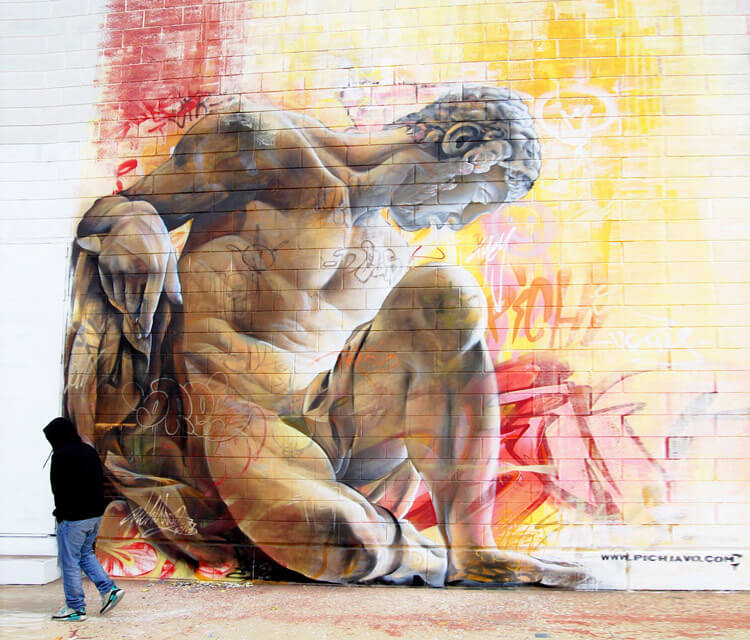
Pichiavo has pure natural talent which is a big boost if you are trying to make notable art. Since they were already enthralled by Greek mythology and classical art, it was easy to find a style that suited both of them. Later on, they made a decision to make art that reflected both their interest and personality. They are inspired by the golden age of classical art and the dynamic nature of modern art.Īt first, their initial focus was on graffiti based techniques. They spend so much time creating art that sometimes it is hard for their fans to tell them apart. They complement each other’s style like Ying and Yang.įrom 2007 the pair has become like brothers. From the time they met, it was like they synchronized their lives and their artwork.

Pichi and Avo met in the streets of Valencia Spain both of them engaging in graffiti activities. It like the gods and goddesses come alive in their artwork. Their approach gives you a lethargic almost surreal sneak peek into the past. They are not like many modern artists who love to give direct messages on their artwork. Whether on paper on canvas you will note the colour, detailed sculptures and texts that are meant to complement the piece being made. These two street artists have a versatile style that is not common today. They are idealistic artists who believe in the complete freedom to express an idea. They are the ‘art cocktail masters’ infusing graffiti, classic art, while in-cooperating in sculptures, social text, and space. In these contexts dragons (often clearly serpentine in some cases, as in that of Tiamat, of different, though unclear, shapes) represent forces or elements that interfere with the correct order or functioning of the world, and they are vanquished by gods who shape and organize the cosmos and, through their victory, acquire authority and power over the newly ordered world.Who said that classical art is dead? Who said that classical artwork would never be complemented by graffiti? If there any of you who never thought the classics and graffiti complemented each other, the Pichiavo pair will prove you wrong.

The most ancient traditions about dragons go back to the Sumerian, Akkadian, and Egyptian mythologies of the first three millennia bce. In contrast, European dragons, as well as some cultures of Asia Minor such as the ancient Persian Empire, were more often than not malevolent, associated with evil supernatural forces and the natural enemy of humanity.

Chinese dragons, and Eastern dragons generally, are usually seen as benevolent and spiritual, representative of primal forces of nature and the universe, and great sources of wisdom. When most people envision a dragon, they think of a large reptile-like creature with enormous wings that breathes fire and attacks castles.Īlthough dragons (or dragon-like creatures) occur commonly in legends around the world, different cultures have perceived them differently. It does, however, have a lengthy history that many people are unaware of. They work both outside and inside the studio, in painting, sculpture and installation, embracing a wide and versatile range of material and painterly approaches.Īs one of the most popular mythological creatures in modern day, the dragon is no mystery. To achieve this they went through various stages as painters, focusing initially on skill and technique until they reached the point of needing to express themselves through what most defines them today: graffiti and classical art. From that moment they worked on developing joint projects, pursuing an unremitting search for a style of their own. They trained in Fine Art and in Design and met on the graffiti art scene in Valencia, forming the PichiAvo duo in 2007. From the outset PichiAvo shunned artistic individuality, joining forces to create an absolutely unique body of work using a conceptually urban idiom, both in the street and in the studio. Recognised for their skill at creating connections between painting and sculpture in urban settings, they adopt a thoroughly innovative approach in their artistic fusions.Ī balanced combination of classical art and the most contemporary urban art can be identified in their work. 1985) is a duo of artists from Valencia (Spain).


 0 kommentar(er)
0 kommentar(er)
